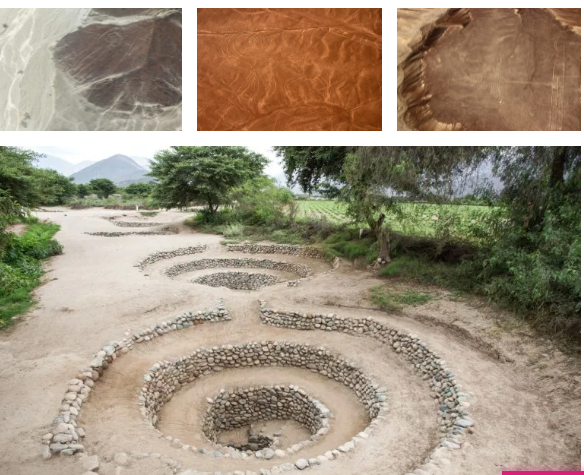80 years old and still mysterious sand lines in Peru
80 years old and still mysterious sand lines in Peru

80 years old and still mysterious sand lines in Peru 1
In the arid coastal plains of southern Peru lies a mystery that has baffled scientists and archaeologists for nearly a century. The Nazca Lines were carved out of sand by indigenous aborigines for reasons that are still largely unknown.
It has generated countless theories since its discovery nearly 80 years ago, as the mysterious Nazca Lines were not discovered until the advent of modern aviation when a pilot flying overhead noticed amazing geoglyphs in 1939.
Over time, dozens of more such drawings were discovered. Nearly 70 geoglyphs depict complex animals and other natural formations, while the other lines are just simple geometric shapes.
The hot, dry climate, frequent rains and impeccable sun in the area, were ideal for maintaining the lines, while the lime-rich sub-layer has strengthened over the years to provide more protection from wind erosion.
Scientists were able to determine that the lines were drawn by digging a 4- to 6-inch trench in the dark upper layers, which expose the lighter ground beneath.
Tests showed that these lines are up to 500 years old, and were probably made between the first and sixth centuries AD.
Several theories have been put forward to explain why these pre-Inca people spent so much time and effort drawing sand lines: is it for irrigation? Mobility? Or some kind of celestial calendar? More creative theories have also suggested that it is because aliens visited the area centuries ago.

Finally, in 2017, a theory emerged, proposed by Rosa Lasaponara of the National Research Council, claiming that satellite imagery links the Nazca Lines to nearby spiral-shaped wells called the Bokeos, which were used for irrigation.
Her theory is that these wells fed water through a complex series of canals and underground aqueducts that could have turned the arid desert into a lush garden oasis, a deep hypothesis that posits that Nazca was more advanced than previously thought.
